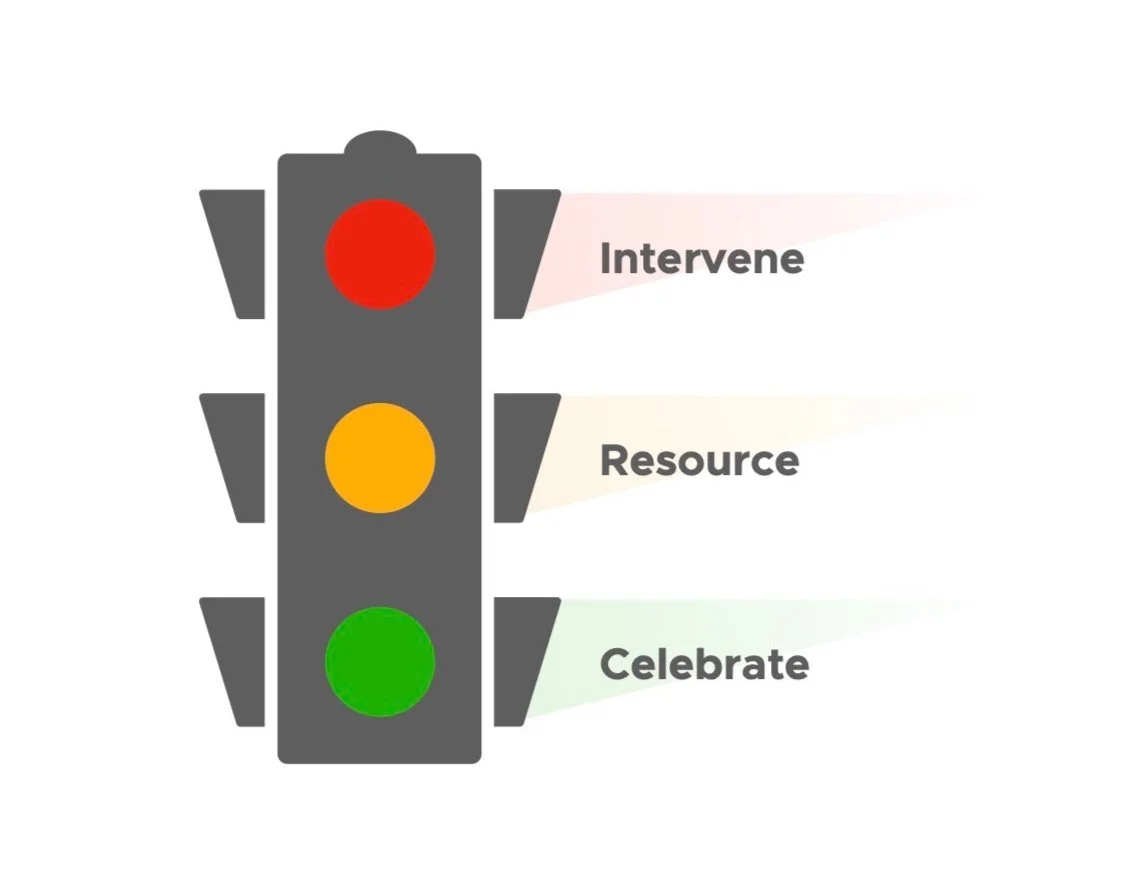Stoplight Check
A stoplight is a simple symbol we all understand: red means stop, yellow is caution, and green means go.
How can we apply a stoplight to our group dynamic?
Leading a group is hard — that’s why not everyone does it. Each Gospel Community has its own unique members, unique qualities, and unique challenges. This demands a leader’s unique attention, creativity, and action to address the group’s condition overall and support the individual needs too. These different dimensions can stretch us, paralyze us, or just go completely missed.
Where do you think you’re at in handling this leadership challenge in your group?
For example, consider how you’d respond to a few leadership challenges:
If I asked you to assess your group’s condition, how would you assess that?
If I asked you to name the care needs of individuals, how would you recall them?
If I asked you to specifically explain how you’re leading each individual in light of the group’s condition and their individual needs, what specific actions would you be able to name?
While some may come to those answers quickly or feel effective in their actions, many of us may identify at least one area we could use help or improve. Thus, the Stoplight.
How do I use the Stoplight?
There’s nothing groundbreaking or magic about this simple framework, but it is simple, memorable, and intentional.
Frameworks enable you to bypass the question of “how do I…?” and get you quickly engaged in meaningful thought around your goals. With a simple framework like the stoplight, you can quickly assess your group’s condition and where you should be taking action as a leader.
Each color creates a bucket to organize into:
Red = an urgent need or issue that needs action right away
Yellow = an emerging need or issue that will require attention in the future
Green = a positive or gain that can be celebrated and further strengthened
Each bucket describes the action you should take:
Red = intervene; take action toward a solution or help
Yellow = resource; create awareness of solutions and maintain awareness of the issue
Green = affirm or celebrate; create a positive cycle where good action is repeated (what’s celebrated gets repeated)
How about an example?
-
If I want to assess how my group relates to one another and the dynamic when we meet to discuss discipleship ideas, I could use the stoplight. In what ways do we interact that seem completely off? In what ways do we interact that may need to grow or develop? In what ways are we getting it right?
Red | The problem: Tim railroads conversations and dominates conversation. The effect: If I continue to let that happen, our group will not form stronger relationships, and our conversations will suffer. Intervene and act now: Talk to Tim directly before our next GC and explain the impact he’s having; establish a code word you’ll use if he’s starting to have a negative impact on the night.
Yellow | The issue: When we talk, very few people participate. Jane seems willing but hesitant. Joe isn’t negative but doesn’t talk at all. The desire: We need to improve how many people contribute to conversations. One small action: While I want to wait and see how this develops as I help Tim dial back, I can will also try a new conversation tactic tonight (ask a question, tell everyone take 10sec to think, then I’ll ask a couple of you to share).
Green | The positive: Sarah consistently speaks up in group, even when Tim is challenging. In fact, she sometimes tries to re-frame what he’s said and engage in the conversation. The potential: If Sarah can keep doing that and maybe draw others in as well, we could turn things around. Affirm: I’m going to tell Sarah how much I appreciate her input in group but also how much of an impact it makes on the whole group. I’m going to ask her if she’d intentionally draw in at least one other person each time she talks at our next GC.
-
First of all, I wouldn’t assess these needs alone.
Always share the care:
If I want to think through the care needs of each individual in my group, I might grab my core partners, co-leaders, or a spouse and start thinking through each person:
Overall, where would I put each person — in a red, yellow, or green bucket?
Then I would ask “why?”
And finally, I would ask, “What is the best way to care for this individual right now?”
-
Here’s a bonus use case: use the stoplight as a focused warm-up or conversation piece in your group.
(Rather than think through care needs for others, have each person assess themselves then share their needs with you or the group.)
Have each individual person answer:
What’s a red light issue for me right now?
What’s a cautionary yellow light I should keep an eye on?
What’s going well that I can celebrate or be glad for?
You could extend the exercise by giving it specific focuses, such as at home vs. at work, or think about your relationship with God vs. relationships with friends and family.

